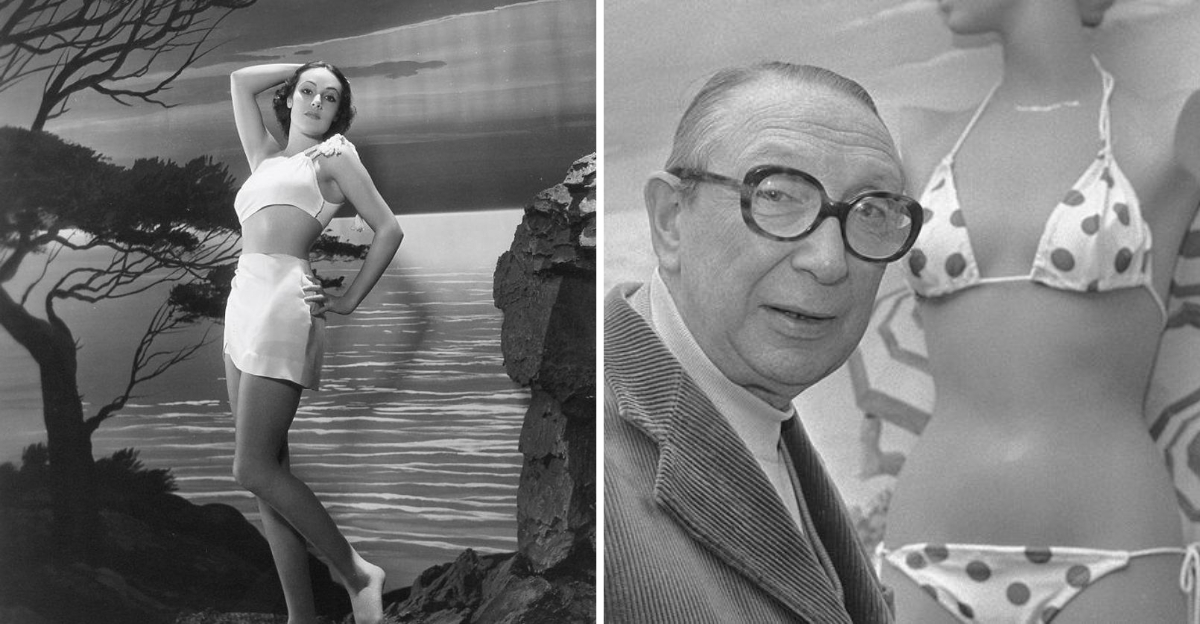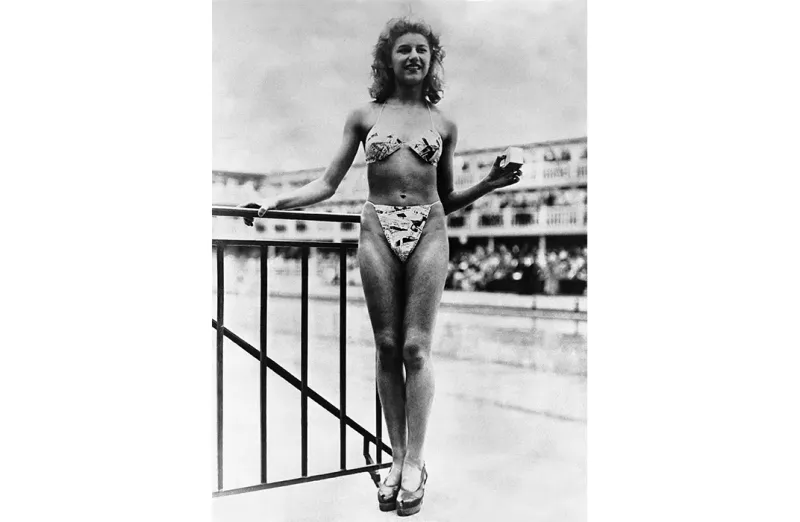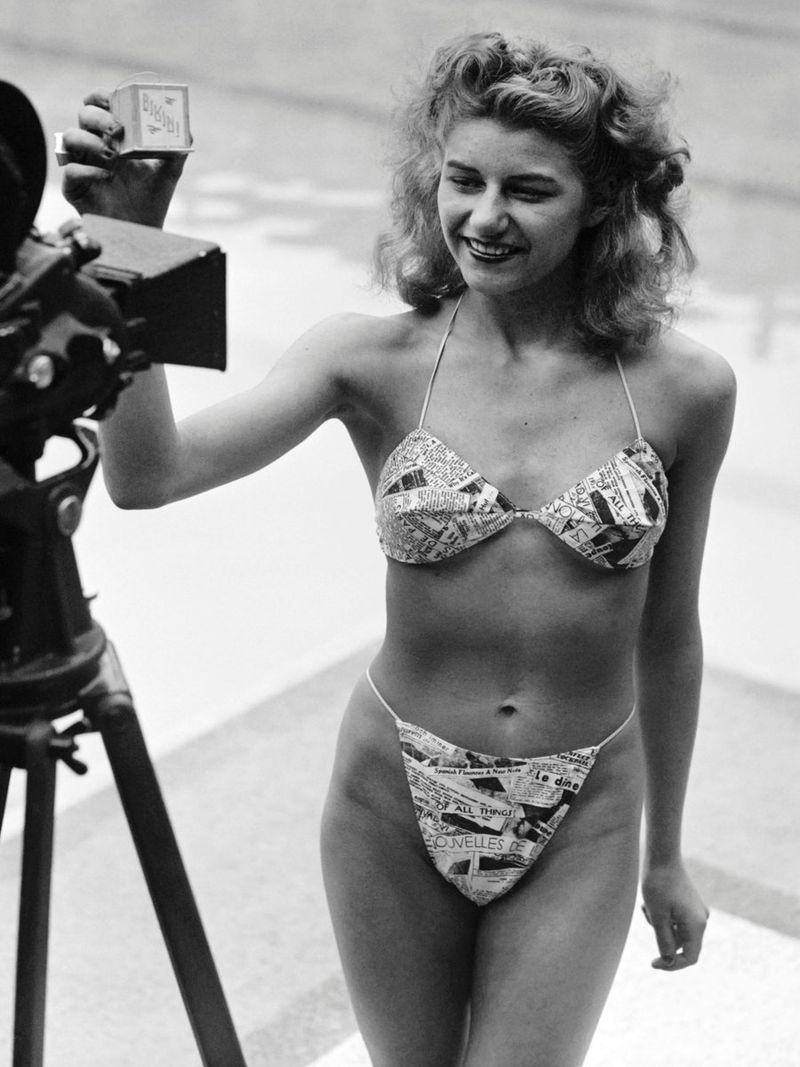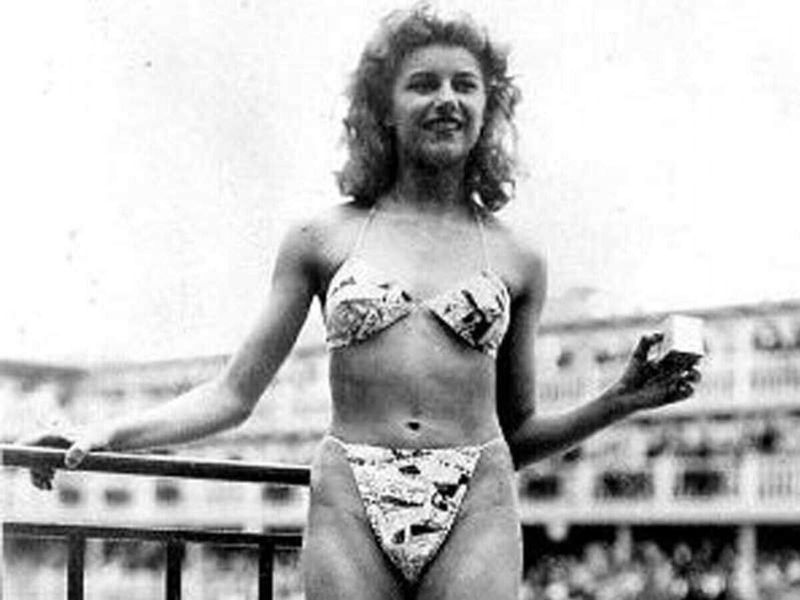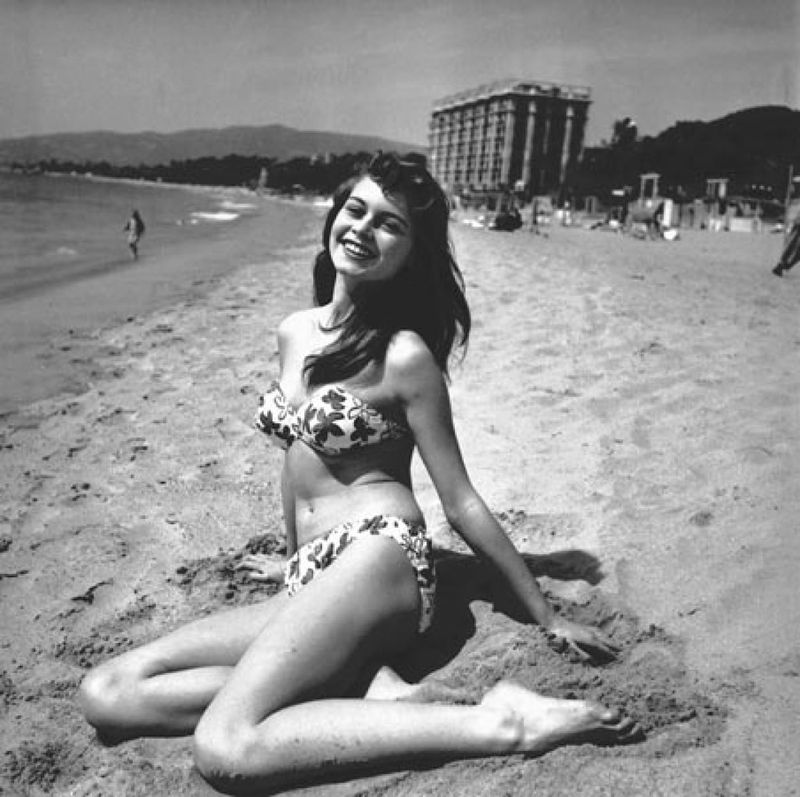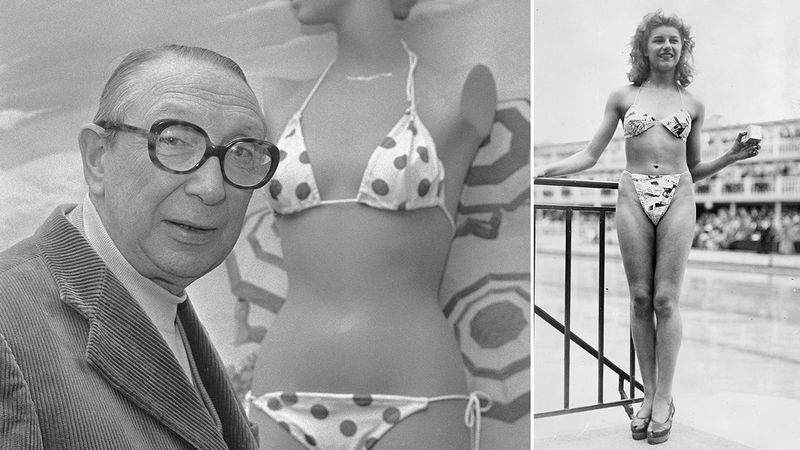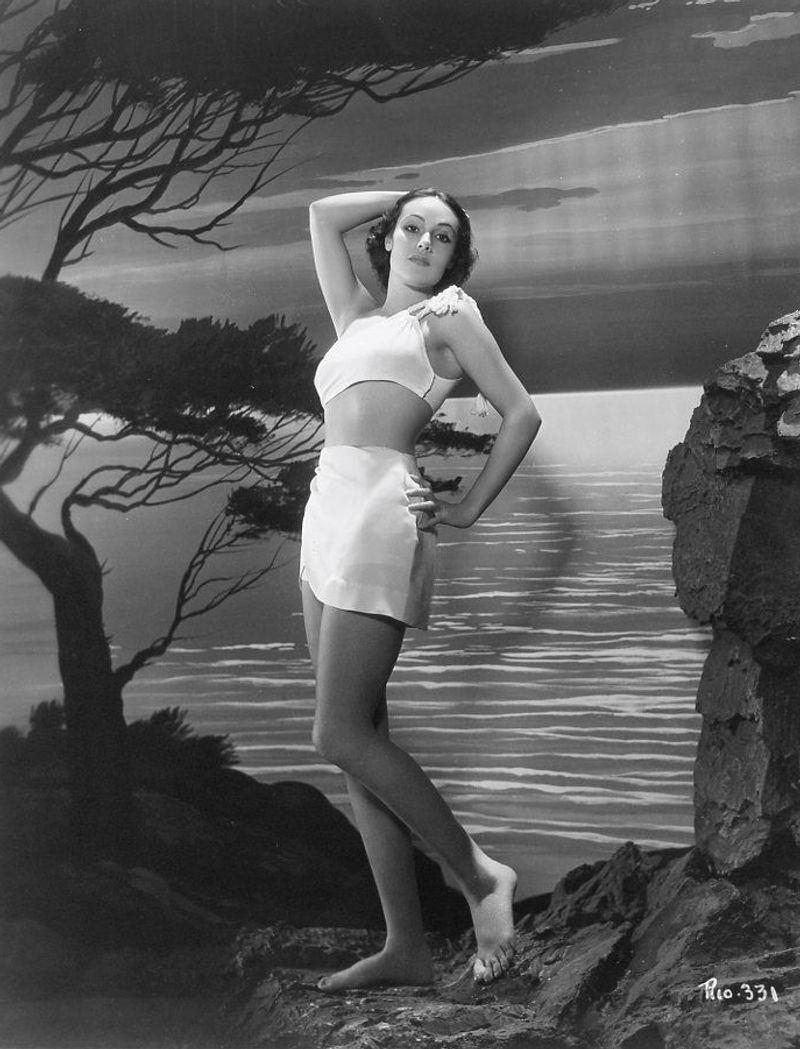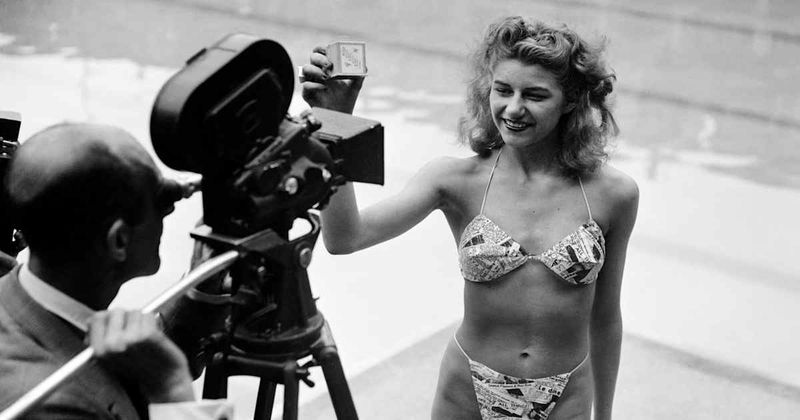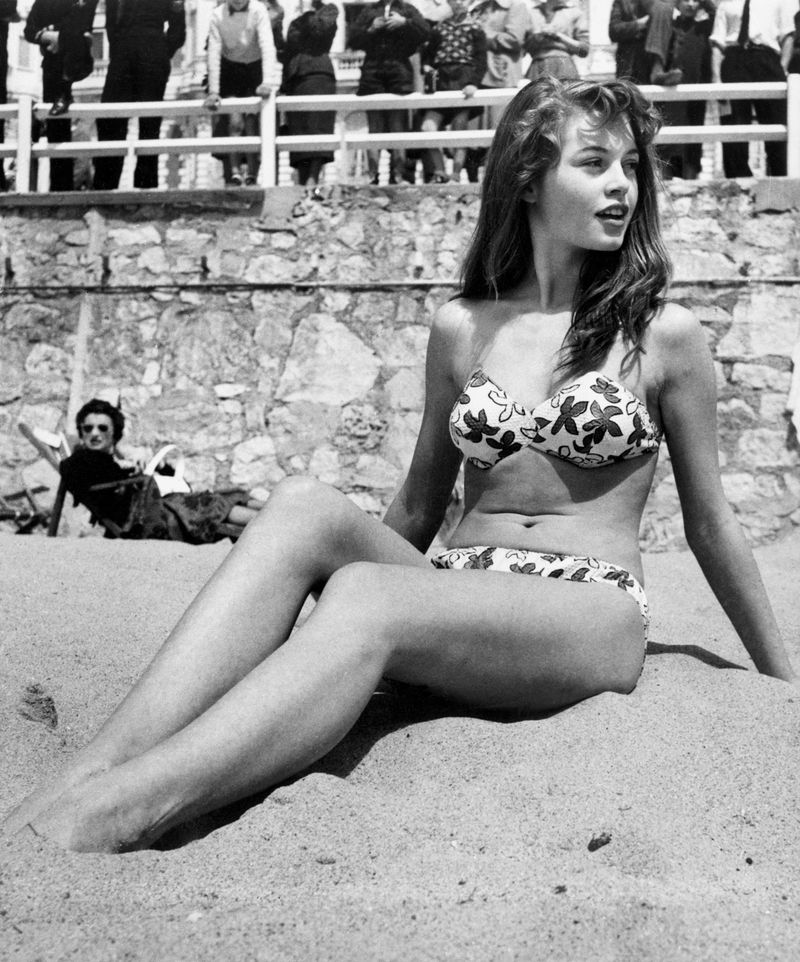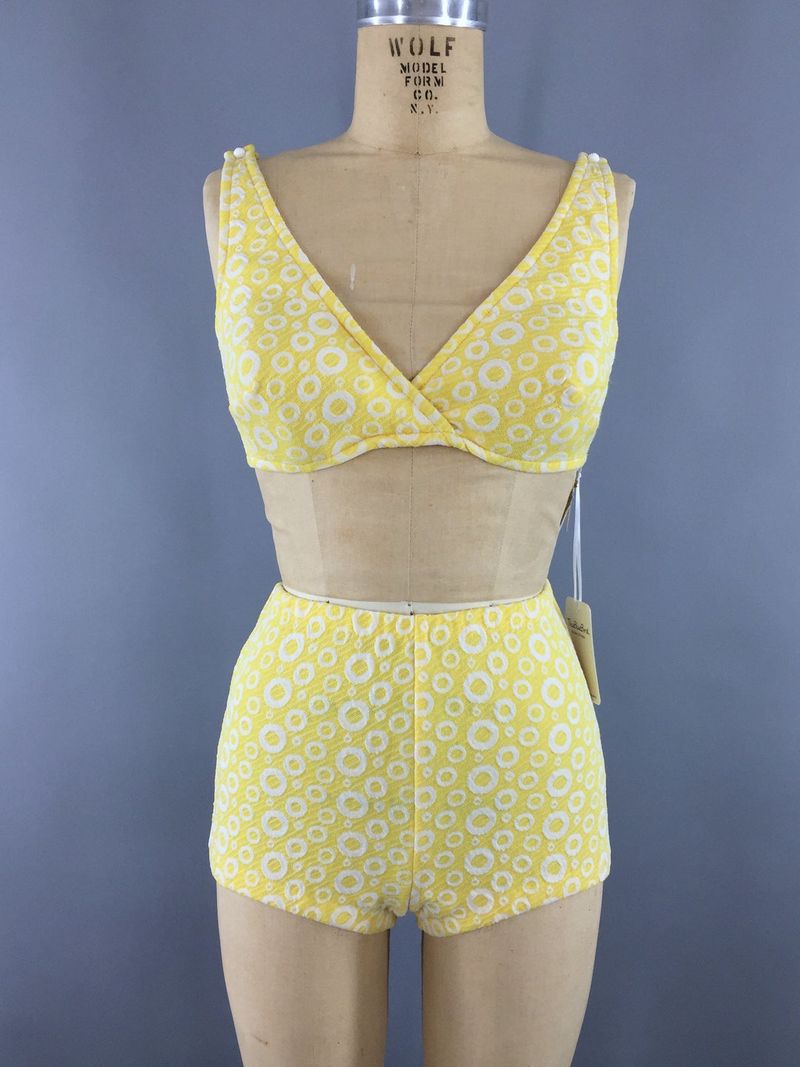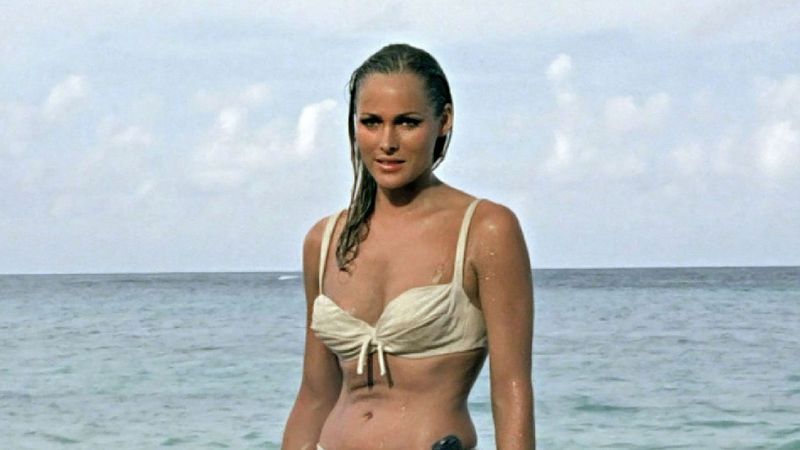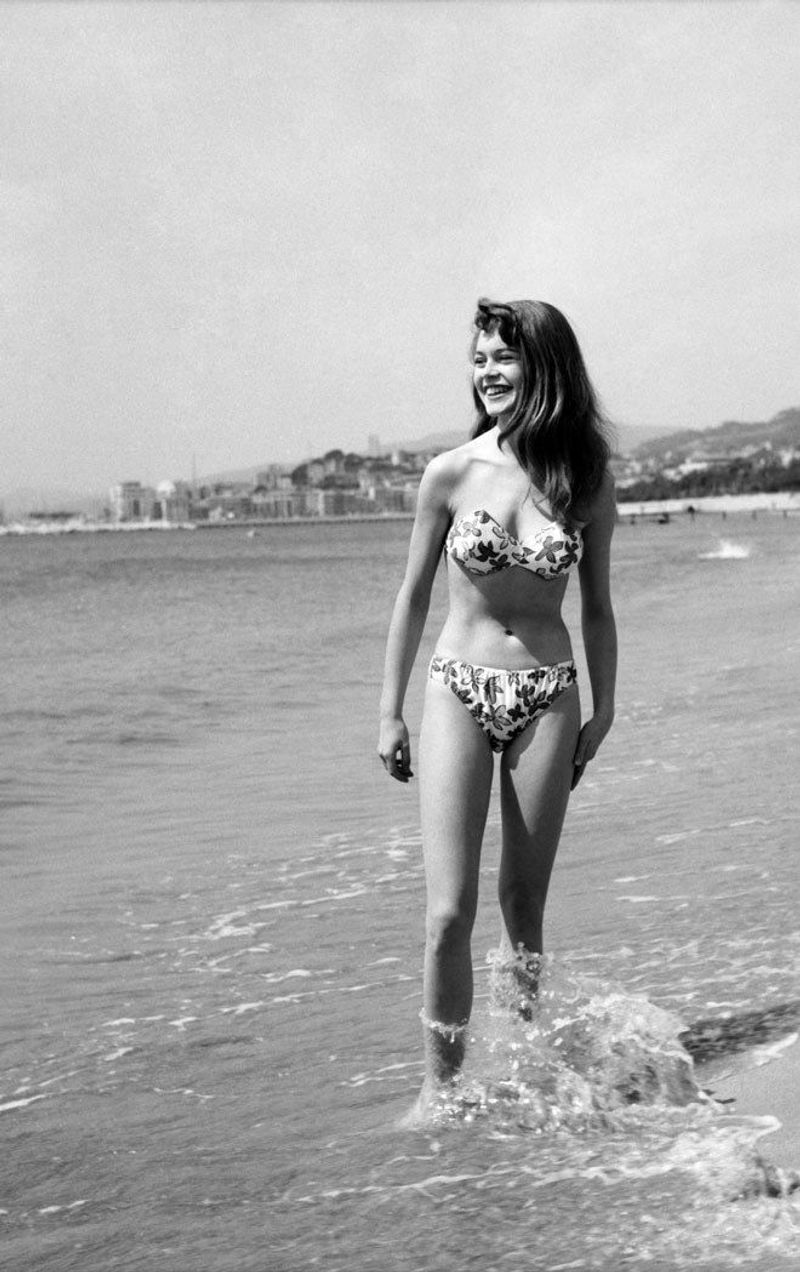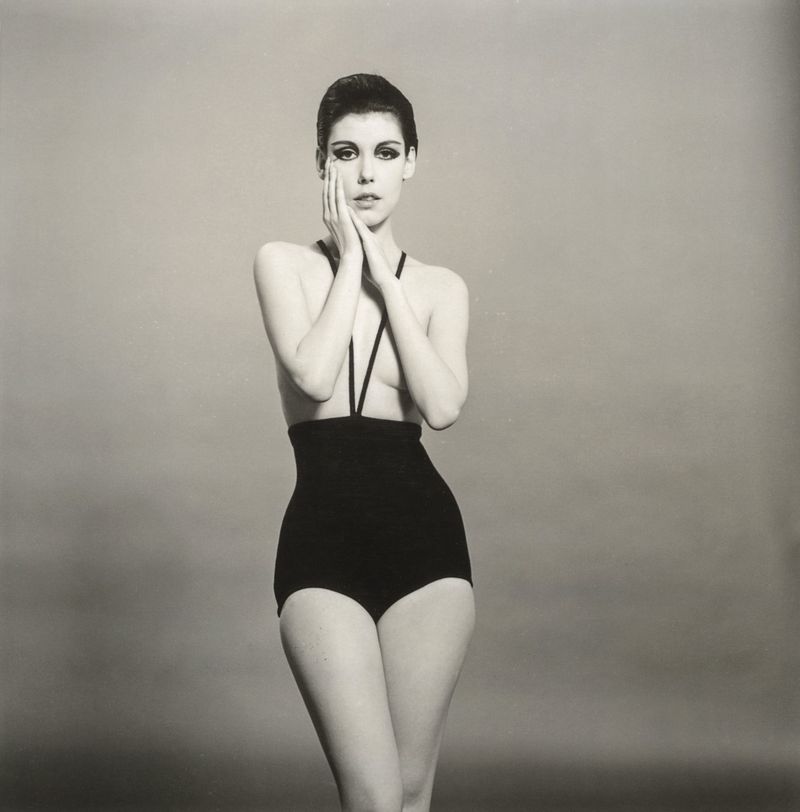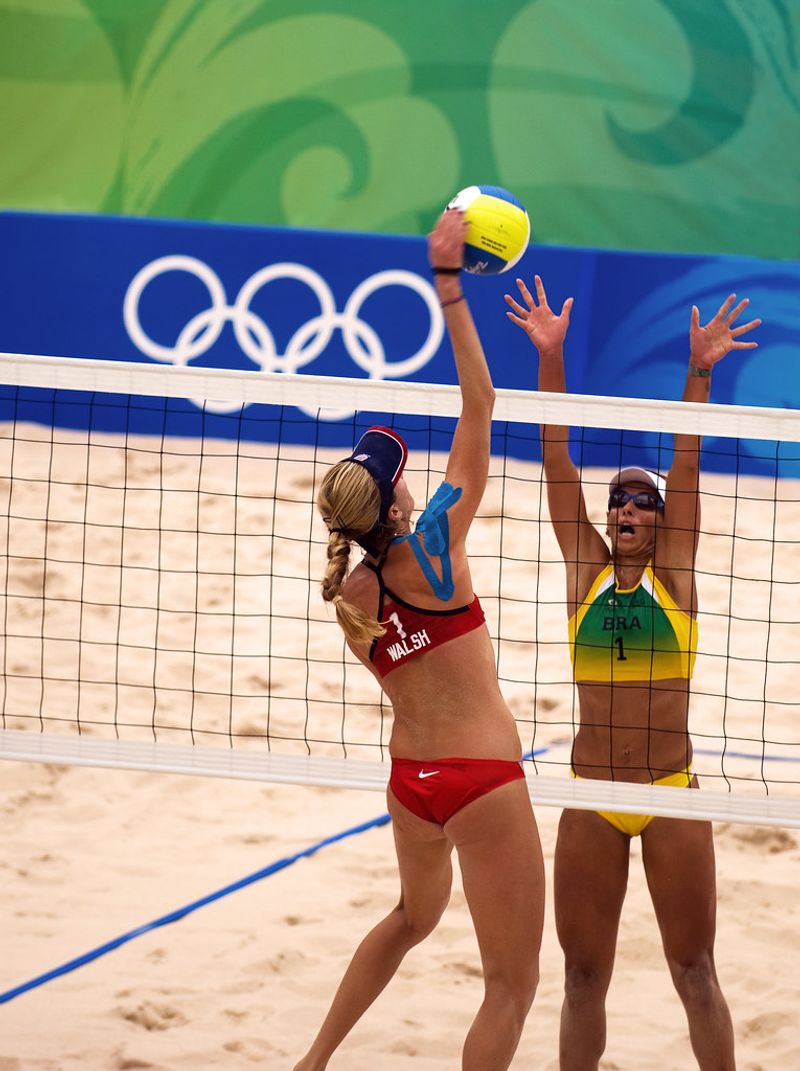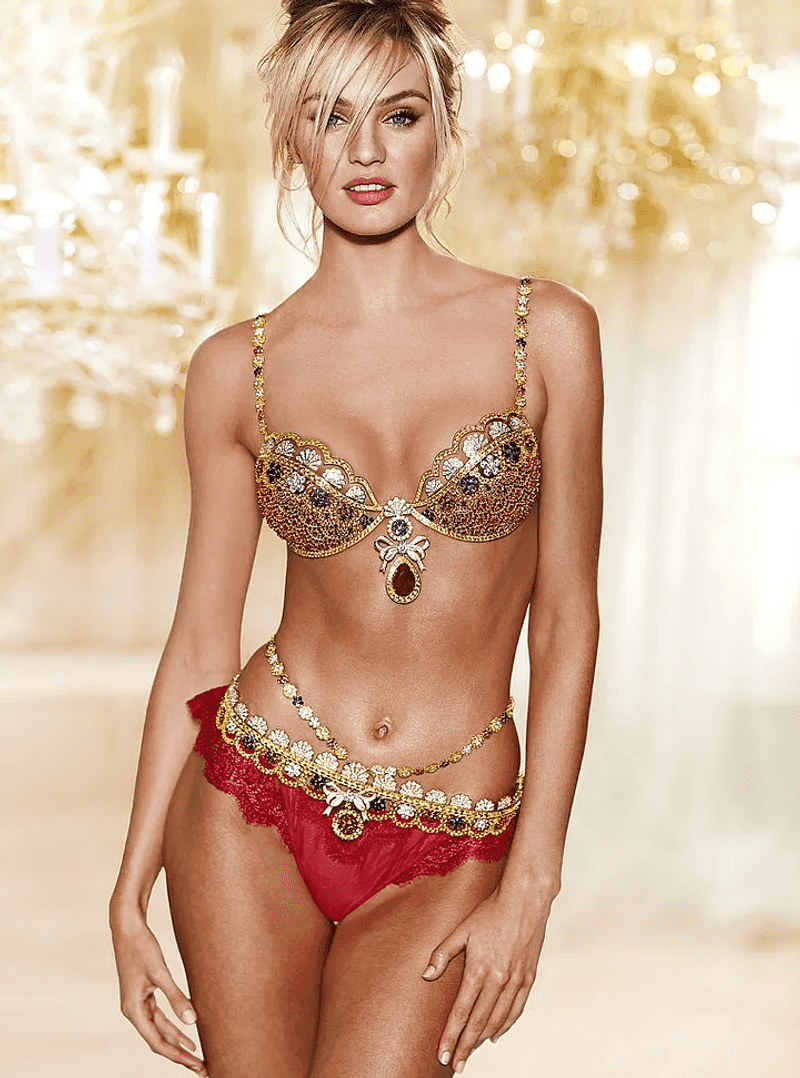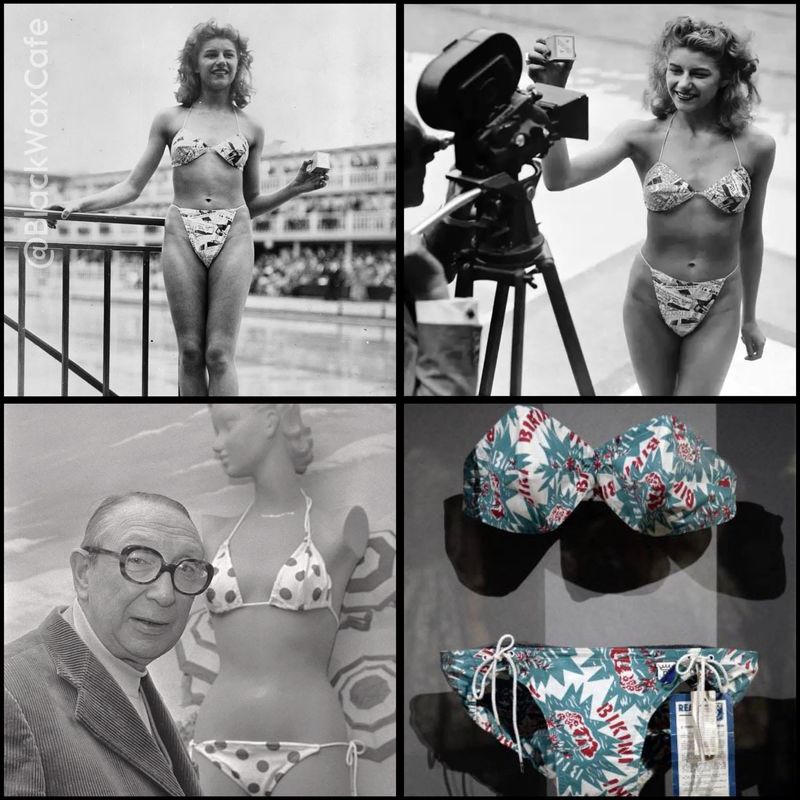The modern bikini made its stunning debut on July 5, 1946, forever changing beachwear and cultural attitudes. This tiny two-piece swimsuit sparked controversy, challenged social norms, and eventually became a symbol of freedom and self-expression. From its explosive naming to global influence, the bikini’s journey from scandal to fashion staple reveals fascinating stories about post-war society and women’s liberation.
1. Atomic Inspiration Behind the Name
The bikini earned its explosive name from the Bikini Atoll in the Marshall Islands, where the United States had conducted nuclear tests just four days before the swimsuit’s debut. Designer Louis Réard deliberately chose this connection to suggest his creation would cause a cultural explosion similar to an atomic bomb.
The timing was no coincidence. Newspapers worldwide were filled with images of mushroom clouds rising over the Pacific, making the name instantly recognizable. Réard’s marketing genius connected fashion to current events in a way that guaranteed headlines.
2. The Daring First Model
Casino de Paris dancer Micheline Bernardini made history as the first bikini model when no professional fashion models would risk the scandal. At just 19 years old, the nude dancer was accustomed to performing with minimal clothing, making her the perfect candidate for Réard’s revolutionary design.
Following the photoshoot, Bernardini received over 50,000 fan letters from admirers worldwide. Her confident pose, holding a small box meant to demonstrate the bikini could fit inside it, became an iconic image of post-war liberation.
3. The Matchbox Challenge
Louis Réard claimed his bikini design wasn’t authentic unless it could be pulled through a wedding ring or fit inside a matchbox when folded. This bold marketing claim emphasized just how minimal the new swimwear truly was – a mere 30 square inches of fabric total.
During the debut presentation, Bernardini dramatically demonstrated this feature by pulling the folded swimsuit from a matchbox-sized container. The stunt perfectly captured media attention and underscored the revolutionary nature of the design compared to the more modest two-pieces that preceded it.
4. Newspaper Print Strategy
The original bikini featured a newspaper print fabric – a deliberate design choice loaded with meaning. This wasn’t just stylistic flair; Réard selected the pattern to suggest the bikini would make headlines around the world.
The print contained actual news stories, creating a meta reference to the media sensation the garment would become. Some fashion historians note another practical reason: the newsprint design emphasized that this wasn’t underwear but a legitimate, albeit revolutionary, piece of clothing designed for public wear.
5. The Rival Designer’s Claim
Jacques Heim, a competing French designer, introduced his own scandalous two-piece called the “Atome” (atom) weeks before Réard’s bikini. Heim advertised it as “the world’s smallest bathing suit” with skywriters flying over Mediterranean beaches.
Not to be outdone, Réard hired his own skywriters to proclaim his bikini was “smaller than the smallest swimsuit in the world.” This fashion rivalry captured public imagination during post-war recovery. The competition ultimately pushed boundaries further, with Réard’s more revealing navel-exposing design securing its place in fashion history.
6. Vatican Condemnation
The Vatican officially condemned the bikini as sinful shortly after its debut. Pope Pius XII declared the revealing swimwear morally offensive, leading many Catholic countries to ban it outright. This religious opposition only heightened public interest.
Spain, Italy, Portugal, and several other Catholic nations prohibited women from wearing bikinis on public beaches throughout the late 1940s and 1950s. Beach police actually patrolled shorelines measuring the amount of skin exposed by women’s swimwear, issuing fines for violations.
7. Secret Design Origins
Few realize the modern bikini’s silhouette was partly inspired by wartime rationing regulations. During World War II, the U.S. government mandated a 10% reduction in fabric used for swimwear and clothing to conserve materials for the war effort.
Designers responded by creating two-piece swimsuits that preserved modesty while using less fabric. Réard, watching these evolving designs, recognized an opportunity to push boundaries further once restrictions lifted. His engineering background influenced the minimalist construction – he approached the design as a problem of mathematical efficiency.
8. Bardot’s Cannes Breakthrough
The bikini might have remained scandalous novelty without Brigitte Bardot’s famous appearance at the 1953 Cannes Film Festival. The 18-year-old French actress caused a sensation in her floral bikini, bringing the controversial swimwear into mainstream fashion consciousness.
Photographers captured Bardot frolicking on the beach, creating images that circulated worldwide. Unlike the initial shock of Bernardini’s presentation, Bardot’s natural confidence and beauty presented the bikini as glamorous rather than merely provocative.
This pivotal moment transformed the garment from taboo to trendy among the European elite.
9. America’s Delayed Acceptance
While Europe gradually embraced the bikini through the 1950s, American shores remained remarkably resistant. The Hays Code prohibited two-piece swimwear in Hollywood films, while most U.S. beaches enforced modesty regulations well into the 1960s.
Brian Hyland’s 1960 hit song “Itsy Bitsy Teenie Weenie Yellow Polka Dot Bikini” paradoxically highlighted American discomfort – the lyrics describe a girl too embarrassed to emerge from the water in her bikini. The song reached #1 on charts despite (or because of) capturing this cultural tension.
10. Bond Girl Revolution
Ursula Andress emerging from Caribbean waters in a white bikini in 1962’s “Dr. No” created one of cinema’s most iconic moments. Her character Honey Ryder’s entrance revolutionized the bikini’s image in America, transforming it from scandalous to sexy-sophisticated overnight.
The scene was so influential that Halle Berry recreated it 40 years later in “Die Another Day.” The original bikini, hand-made by Andress and costume designer Tessa Prendergast, sold at auction in 2001 for nearly $60,000.
This cultural milestone marked the bikini’s acceptance into mainstream American fashion.
11. The French Riviera Exception
While many European countries initially banned the bikini, the French Riviera became its sanctuary. Saint-Tropez especially embraced the daring swimwear, establishing itself as a haven for fashion-forward beachgoers seeking freedom from conservative restrictions.
Local officials recognized the tourism potential of permitting what was forbidden elsewhere. Celebrities flocked to these beaches, further cementing the Riviera’s reputation for glamorous liberation.
By the mid-1950s, Saint-Tropez had become synonymous with bikini culture, inspiring the 1956 hit song “Bikini Beach” that celebrated this Mediterranean paradise of fashion freedom.
12. The Monokini Scandal
Austrian-American designer Rudi Gernreich shocked the world in 1964 with the monokini – a topless swimsuit with only a bottom half. This radical design pushed boundaries even further than Réard’s original bikini, causing fresh controversy and arrests when worn on public beaches.
Despite never achieving mainstream popularity, the monokini sold over 3,000 units in its first season. Fashion historians consider it a deliberate provocation meant to challenge social norms rather than practical beachwear.
Gernreich’s creation represented the logical extreme of the minimalist direction Réard had started.
13. Olympic Transformation
The bikini gained serious athletic legitimacy when it became the official uniform for women’s Olympic beach volleyball in 1996. This controversial decision sparked debates about the sexualization of female athletes versus practical performance considerations.
Players reported the minimal design allowed better movement and prevented sand from trapping in fabric. The bikini’s appearance in such a prestigious sporting event completed its journey from scandal to standard.
Interestingly, in 2012, the International Volleyball Federation changed rules to allow more modest options, acknowledging cultural sensitivities while maintaining the bikini as an option.
14. The $30 Million Bikini
In 2012, designer Susan Rosen created the world’s most expensive bikini, valued at $30 million. Made with over 150 carats of flawless diamonds set in platinum, the swimsuit represented the ultimate evolution from Réard’s humble newspaper print original.
Supermodel Molly Sims posed in this creation for the Sports Illustrated Swimsuit Issue, though security concerns meant she never entered water while wearing it. The astronomical price tag demonstrated how far the bikini had traveled from controversial beachwear to luxury status symbol.
15. The Secret Military Connection
Louis Réard wasn’t just any fashion designer – he was an automotive engineer who managed his mother’s lingerie shop in Paris. His technical background influenced the bikini’s construction, approaching the design as an engineering problem: maximizing exposure while maintaining functionality.
During World War II, Réard had worked on military vehicle design, bringing precision thinking to fashion. The bikini’s straps and triangular support system borrowed principles from suspension bridges and tensile structures.
This unique combination of lingerie knowledge and engineering expertise created the perfect storm for revolutionary swimwear design.
